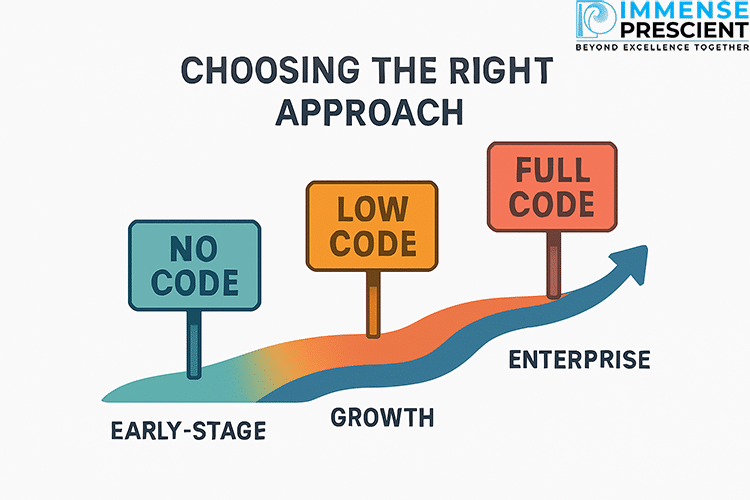Low Code, No Code, Full Code: Choosing the Right Approach
Low Code vs No Code vs Full Code : Choosing the Right Approach Based on Business Maturity
Digital transformation today is not a one-size-fits-all journey. Businesses can build software using no-code platforms, low-code solutions, or full-code development but the right choice depends on the maturity of your business.
So, how do you know which path to take? Let’s break it down.
🚀 What is No Code?
- Best for: Early-stage startups, non-technical teams, rapid prototyping
- Definition: No code platforms allow users to build apps using drag-and-drop interfaces without writing a single line of code.
- Strengths: Speed, accessibility, and low upfront cost.
- Limitations: Limited customization and scalability.
👉 Example: A retail startup using Shopify or Bubble to quickly launch an e-commerce MVP.
⚡ What is Low Code?
- Best for: Growing businesses, mid-market firms, teams with some technical expertise
- Definition: Low code provides pre-built templates and components with the flexibility to add custom code where needed.
- Strengths: Balances speed with customization, accelerates digital transformation.
- Limitations: Still requires developers for complex features.
👉 Example: A logistics company using Mendix or OutSystems to build custom dashboards.
🏗️ What is Full Code?
- Best for: Enterprises, regulated industries, companies needing complete control
- Definition: Full code means traditional software development writing applications from scratch with complete customization.
- Strengths: Unlimited scalability, deep integration, robust security.
- Limitations: Time-consuming, resource-heavy, expensive.
👉 Example: A fintech building a proprietary payments platform with full-code development.
🎯 Choosing Based on Business Maturity
| Business Stage | Recommended Approach | Why it Works |
| Startup / Early Stage | No Code | Speed to market, validation of ideas |
| Growth / Scaling | Low Code | Balance of speed + flexibility |
| Enterprise / Complex | Full Code | Security, scalability, integrations |
🧭 Key Takeaway
Your business maturity dictates your tech maturity.
- Start lean with no code,
- Scale smart with low code,
- Go deep and custom with full code.
Choosing the right path ensures you don’t over-engineer too early or underinvest when scale demands robustness.




